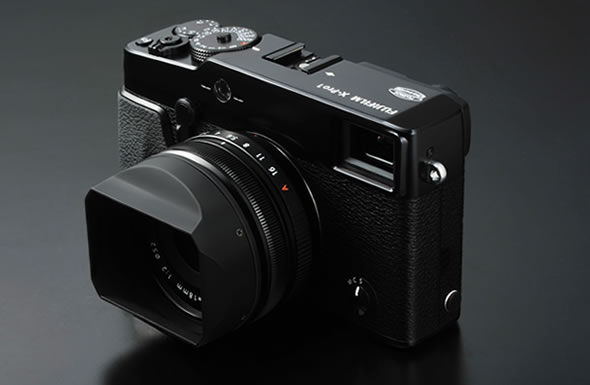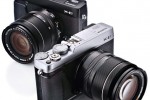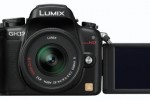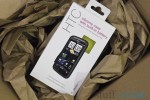
Digital mirrorless interchangeable lens cameras (MILCs) have gone a long way since Panasonic released the first Micro Four Thirds camera over 3 years ago. During this time, we’ve seen practically all major camera manufacturers (except Canon) entering the space that was once the privilege of multi-thousand dollar Leica Rangefinders. Fujifilm showed us what they can do with a high-end compact camera in their excellent fixed-lens FinePix X100 shooter last year. Now, Fujifilm plans to release a new X-series MILC system led by their X-Pro1 camera.
Despite coming late to the party, Fujifilm intends to enter with a bang. The X-Pro1 has Leica-like controls with individual shutter speed and exposure compensation dials, while each lens has a manual aperture ring. Fujifilm has also improved on the X100’s hybrid electronic/optical viewfinder, and the second generation has found its way in the X-Pro1.
In our comparison below we have pitted the Fujifilm X-Pro1 against the best of the competition, the Panasonic GX1, the Sony NEX-7 and the Olympus E-P3. All four share the same rangefinder-style body, though not all come with a built-in viewfinder. It’s interesting to note that the X-Pro1 includes a number of technologies which are unique, including the new X-Trans CMOS sensor and hybrid viewfinder.
Anyone trying to decide between the, now, huge selection of MILCs should also consider the entire ecosystem supporting the camera. For that reason, we’ve now included a new line in our comparison table, titled ‘Lens ecosystem’. This is an approximation of the number and types of lenses released by each system’s official manufacturer(s); it does not include lenses by third parties. The Micro Four Thirds format has been around the longest out of the bunch, and understandably has by far the largest lens selection.
Fujifilm has elected to release the X-Pro1 system with three fast prime lenses, 18mm (27mm equivalent) f/2.0, 35mm (53mm equivalent) f/1.4 and 60mm (90mm equivalent) f/2.4 macro. If you want the convenience of a zoom lens, for now you have to look elsewhere.
| Fujifilm X-Pro1 | Panasonic Lumix DMC-GX1 | Sony NEX-7 | Olympus E-P3 | |
|---|---|---|---|---|
 |
 |
 |
 |
|
| Sensor (effective resolution and size) | 16.3-megapixel ASC-C X-Trans CMOS |
16-megapixel 4/3 Live MOS | 24.3-megapixel APS-C Exmor HD CMOS | 12.3-megapixel 4/3 Live MOS |
| 23.6 x 15.6mm | 17.3 x 13.0mm | 23.5mm x 15.6mm | 17.3mm x 13.0mm | |
| Focal-length multiplier | 1.5x | 2.0x | 1.5x | 2.0x |
| Sensitivity range | ISO 200-6,400 (100-25,600 extended) | ISO 160-12,800 | ISO 100-16,000 | ISO 100-12,800 |
| Continuous shooting | 6 fps | 4.2 fps | 10 fps | 3 fps |
| Viewfinder / effective magnification |
Second generation hybrid optical /electronic
OVF 0.37x and 0.6x magnification depending on lens 90% coverage EVF 1440 dots 100% view |
Optional external EVF 1440k dots 100% view | 2359k dots OLED EVF with eye sensor 100% view / 1.09x with 50mm lens |
Optional external |
| Autofocus | 49-point TTL contrast AF | 23-point contrast AF 0.09-seconds Touch AF |
25-point contrast AF | 35-area contrast AF Touch AF |
| Shutter speed | 30-1/4,000 sec; bulb max 60 min | 60-1/4,000 sec; bulb max 2 min | 30-1/4,000 sec; bulb | 60-1/4,000 sec; bulb max 30 min |
| Metering | 256 zones | 144 zones | 1,200 zones | 324 zones |
| Flash | External | Yes | Yes | Yes |
| Image stabilization | None | None (lens) | None (lens) | Sensor shift |
| Lenses | X mount
Leica M with adapter |
Micro Four Thirds
Four Thirds with adapter |
E-mount Alpha-mount with adapter |
Micro Four Thirds
Four Thirds with adapter |
| Lens ecosystem | 2 prime 1 macro |
6 prime 1 macro 1 fisheye 15 zoom 1 3D lens |
3 prime 1 macro 3 zoom |
6 prime 1 macro 1 fisheye 15 zoom 1 3D lens |
| Video | 1080p24, 720p24 | 1080p30(25 PAL) 20Mbps MP4
1080i60 17Mbps AVCHD |
1080p60 AVCHD 28Mbps
1080p24 24Mbps 1080i60 17Mbps |
1080i60 AVCHD 17Mbps 720p60 17Mbps |
| Audio | Stereo – | Stereo; mic input | Stereo; mic input | Stereo; mic input |
| LCD size | 3-inch 1,230k dots RGBW (White) LCD | 3-inch 460k dots fixed touch LCD | 3-inch 922k dots tilting LCD | 3-inch 614k dots fixed touch OLED |
| Battery life (CIPA rating) | 300 shots | 300-340 shots | 410 shots | 330 shots |
| Dimensions | 5.5 x 3.2 x 1.7 in (140 x 82 x 43 mm) |
4.6 x 2.7 x 1.6 in (116 x 68 x 39 mm) |
4.8 x 2.6 x 1.7 in (120 x 67 x 43 mm) |
4.8 x 2.7 x 1.4 (122 x 69 x 34 mm) |
| Body weight including card and battery | 15.9 oz (450g) | 11.2 oz (318g) | 12.3 oz (350g) | 13.0 oz (369g) |
| Body material | Aluminium and magnesium alloy | Aluminium with metal buttons | Magnesium alloy | Metal |
| MSRP | $1,700 (body only) | $700 (body only) | $1,200 (body only) | n/a |
| $2,300 (with 35mm f1.4 kit lens) | $800 (with 14-42mm kit lens) | $1,350 (18-55mm kit lens) | $900 (with 14-42mm kit lens) | |
| $950 (with 14-42mm X power zoom lens) | n/a | $900 (with 17mm f2.8 kit lens) | ||
| Release date | March 2012 | December 2011 | December 2011 | August 2011 |
| © Stuff-Review | ||||
Be sure to have a look at the first hands-on videos of the X-Pro1 and our extended look at the camera on its launch day.











